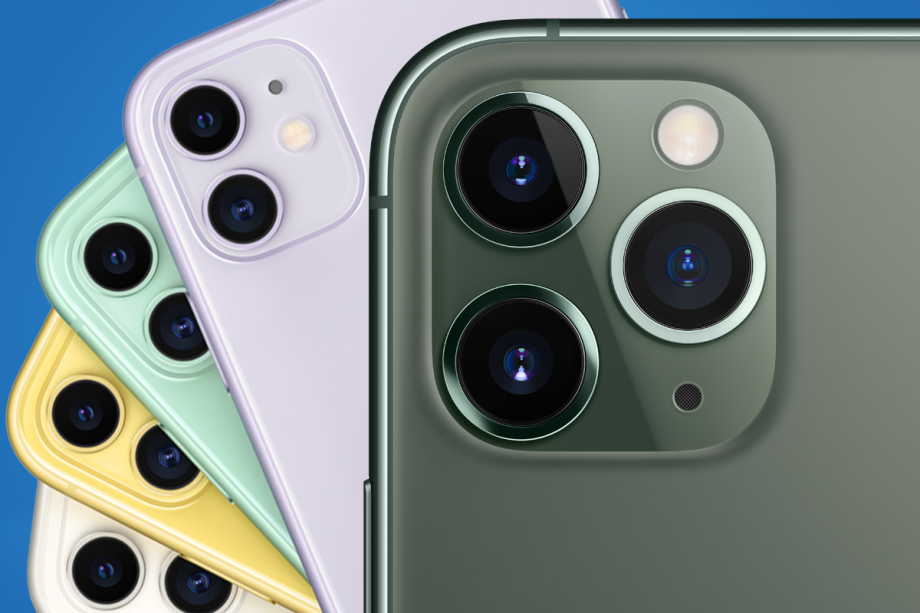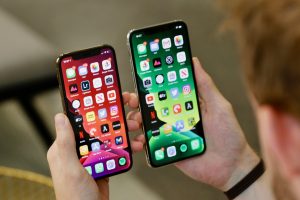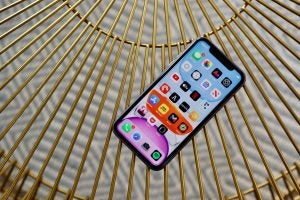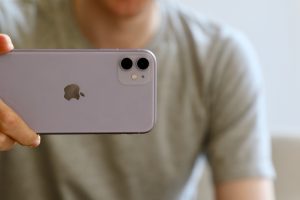iPhone 11 vs iPhone 11 Pro: The Final Verdict

If you’re on the hunt for a new iPhone, then your primary choice is going to be between the iPhone 11 and iPhone 11 Pro.
These two devices are flagship Apple phones announced a few months ago in September. The iPhone 11 Pro, as the name might suggest, is the pricier model and it comes in a duo of sizes. The iPhone 11, on the other hand, is more affordable and only available with a 6.1-inch screen.
This is, of course, merely the start of the story. These phones are all quite different and will likely appeal to differing audiences. Read on to see which one is for you.
iPhone 11 vs iPhone 11 Pro: At a glance
- The iPhone 11 replaces the iPhone XR and it’s the cheapest of three new iPhones released in 2019
- The iPhone 11 has a 6.1-inch LCD. The 11 Pro has a 5.8-inch OLED and the 11 Pro Max ups that to a 6.5-inch OLED
- All three are powered by new A13 chipset
- iPhone 11 Pro has more cameras, three on the back as opposed to the two of the iPhone 11.
- That third camera is a telephoto for improved zooming
- The iPhone 11 Pro and Pro Max come with an 18w charger, the iPhone 11 only has a 5w charger in the box
iPhone 11 vs iPhone 11 Pro – Specs and Camera
While these new iPhones don’t look too much different from their predecessors in terms of design, there’s a lot of differences inside. All three are powered by Apple’s brand-new A13 chip, come with iOS 13 installed and boast loads of improvements to the cameras. There’s also 4GB RAM (that’s according to the Geekbench benchmarking app, anyway) across all models.
The A13 chipset is the next-generation of Apple’s silicone and it provides absolutely fantastic performance across all Apple’s 2019 iPhones. There’s no obvious difference in terms of speed and graphical power between the iPhone 11 and 11 Pro though, so don’t pick up the pricier model expecting it to run games faster.
Storage is a bit of an issue though, especially when you consider the iPhone 11 Pro costs more than £1000 ($999 in the USA) and for that hefty outlay you only get 64GB. Of course you can pay more for 256GB or 512GB. We’d suggest ignoring the 64GB immediately and instead go for the 256GB option.

iPhone 11 Pro (left) 5.8-inches vs iPhone 11 Pro Max (right) 6.5-inches
The iPhone 11 also starts at 64GB and again we’d suggest paying a bit more to get either the 128GB or 256GB option. There’s no 512GB iPhone 11.
Related: iPhone 11 features
The iPhone 11 has a dual 12-megapixel setup with a dedicated ultra wide lens sitting next to the more traditional 12-megapixel wide. That ultra wide camera is there for wider shots like landscapes and it adds an extra degree of versatility to the pictures you can capture.
On the iPhone 11 Pro model, you have the same two cameras as the 11 Pro, however there’s also a 2x telephoto lens here – if you’ve used an older iPhone ‘Plus’ model or the iPhone X or XS then this will feel instantly familiar. The three cameras on the back of the iPhone 11 Pro consists of three 12-megapixel sensors: wide (26mm, f/1.8 OIS), ultra wide (13mm focal length, 120-degree FOV, f/2.4 aperture) and telephoto (52mm, f/2.0, OIS).
Both the iPhone 11 and iPhone 11 Pro take excellent photos and are a serious upgrade on the iPhone XS. You can read our iPhone 11 Camera review and our iPhone 11 Pro Camera review for in-depth looks including photo and video samples along with comparisons.

iPhone 11
Like the Google Pixel 4 and the Huawei P30 Pro, both the iPhone 11 and iPhone 11 Pro boast new Night Modes that impressively improve low-light photography. This mode works by stitching together a number of different snaps at various exposures to give you a brighter overall image.
Night Mode is triggered automatically when the phone detects that there’s little natural light available and you can’t force yourself into the setting if it doesn’t appear by itself. This can be slightly irritating, but we’ve found it normally enters the mode in the right situation. What you can do is manually alter the time it takes to capture the photo.
Related: Best iPhone Deals
Even though we are seeing lots of phones with 5G in the UK begin to hit the market from the likes of Huawei, Samsung and OnePlus, Apple has decided against ensuring its next-gen phones support the faster connectivity options. This has long been rumoured and comes as no real surprise, even if it is something of a disappointment for those spending upwards of £1000/$1000 on a phone. Maybe we’ll see this hit the iPhone series next year when the 5G networks across North America and Europe are switched on.
Another huge difference between these new phones is their displays. The iPhone 11 Pro and Pro Max both have ‘XDR displays’ (5.8-inches and 6.5-inches respectively) which means they can hit 1200nits of brightness and include support for Dolby Vision and HDR10. The iPhone 11 display seems almost meagre in comparison, with its LCD tech and 1792×828 resolution.
When the two phones are side-by-side you can notice a gulf in quality between the two – that is pretty obvious. The Pro models are sharper, pack inkier blacks thanks to the OLED tech, and are a lot brighter when watching HDR content. However, the iPhone 11 by itself and I can’t see many people being disappointed by the panel, but the Pro is the one to go for if you want the absolute best display experience.
iPhone 11 vs iPhone 11 Pro – Battery life and charging
Apple has improved the battery life across all models this year, however the biggest benefits sits with the Pro models.
If you pick up the iPhone 11 you’ll likely get around an hour of extra battery life, whereas the Pro versions pack much more than that. Gauging the actual improvement is tough, but the 11 Pro Max is a phone that’ll comfortably last most people well into a second day of use.
Both phones also support faster charging, however you’ll have to pay extra to take advantage of this with the iPhone 11. Both the iPhone 11 Pro and 11 Pro come with an 18w USB-C charger along with a USB-C to Lightning cable. The iPhone 11 is boxed with the same 5w charger as every previous iPhone.
Wireless charging is available across all models.

There are two cameras on the back of the iPhone 11
iPhone 11 vs iPhone 11 Pro – Look and feel
Apple used to work on the schedule that saw a huge design overall every two years – you’d get the big update one year and then an S update the following year. That’s all changed now, with the iPhone 6 design sticking around for multiple generations.
This year we’ve got three phones that look very much like the outgoing models. The iPhone 11 Pro and iPhone 11 Pro Max match the sizes from 2018, with the same stainless steel frame, glass back and rounded sides.
However, you will notice that the back of the iPhone 11 Pro is slightly more matte-looking than before, and we’re massive fans of it.
Related: Apple Arcade
The iPhone 11 looks very similar to the iPhone XR, sitting between the two Pro models in terms of size, however it ditches the stainless steel for aluminium and comes in a wider variety of colours. These colours are also a little more muted than before, with shades that are a little more pastel. There’s also a redesigned camera bump on the back.
Both have displays that stretch close to the bezel with a cutout for the FaceID unlocking sensor at the top. There’s no return for TouchID either, with no physical sensor or under the display sensor like on the Galaxy S10.
The new iPhone 11 Pro models also have a stronger body and retain the IP68 rating of older devices – this means they can be dunked in water without causing them to break.
iPhone 11 vs iPhone 11 Pro – How much do they cost?
Check out the tablet below for all the prices of the new iPhone 11, iPhone 11 Pro and iPhone 11 Pro Max.
| iPhone 11 | iPhone 11 Pro | iPhone 11 Pro Max | |
| 64GB | £729 / $699 | £1049 / $999 | £1149 / $1099 |
| 256GB | £779 / $749 | £1199 / $1149 | £1299 / $1249 |
| 512GB | £879 / $849 | £1399 / $1349 | £1499 / $1449 |
Related: Best iPhone Deals
Apple’s new device prices are slightly different from what we saw last. The iPhone 11, which replaces the XR, starts at £729/$699, while the iPhone 11 Pro starts at $999/$1049 and the Max version upping that to $1099/£1149. Prices will continue to rise as you add more storage.
iPhone 11 vs iPhone 11 Pro – Which one should you buy?
Both of Apple’s 2019 flagships are excellent phones and a good step forward from what we saw in 2018. Whichever one you choose you’ll be getting a phone we can easily recommend.
We would say, for most people, the iPhone 11 is the better mix of functionality and price. It takes just as good pictures as the Pro, is just as fast and is available in more colours – but, most importantly, it’s a lot cheaper.
However, the iPhone 11 Pro is technically the ‘better’ phone thanks to a nicer display (available in two sizes), an extra rear camera and the option of fantastic battery life if you go for the Max model. Of course, you’ll have to pay more for the pleasure.


